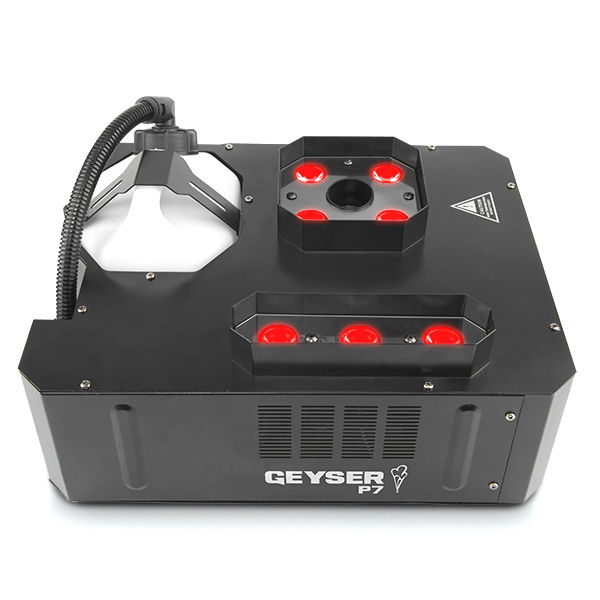Cleaning Fog Machines (Not!)
Frequently Asked Question:
My friends tell me, and I keep reading on the internet, that I should clean my fog machine. Please tell me, how do I clean my fog machine?
You DON'T! Do NOT clean that fog machine!! Excuse me for yelling, but this is a particular peeve of Mr. Wizard's. Especially at this time of year, as many haunters retrieve their foggers from storage only to discover that they no longer work, due to the fact that they were "cleaned" before they were put away after last year's Halloween events.
That said, I must point out that there are actually times when cleaning IS required, but only in certain cases, and it must be done in a very special way, which I shall now expound upon in great detail.
First, let's discuss what a fog machine actually does.
A fog machine takes fog fluid in liquid form and turns it into fog fluid in aerosol form. In other words, it sprays tiny droplets of fog fluid into the air. It accomplishes this by utilizing a combination of pressure and heat. It pumps the fog fluid through a small channel in a heated chamber, and out come tiny droplets of the same fluid that you put in the machine's tank in the first place. (The temperature of the heater correlates with the vaporization temperature of the fluid. That's why you should only use fog fluid that is approved by the fog machine's manufacturer.)
Fog Fluid is generally a mixture of purified water and one or more glycols. Theatre Effects Fog Fluid is made from high quality ingredients. Theatre Effects fog machines will never need to be cleaned as long as nothing other than Theatre Effects Unscented Fog Fluid is ever put in the tank.
Low quality fluid ingredients may clog a fogger's heater. Improper ingredients may clog a fogger's heater. Additives, such as fragrances and colors, may clog a fogger's heater. If a fog manufacturer advises routine cleaning, then Mr. Wizard wonders, "what is in that fog fluid that would cause the fogger to clog in the first place?" And of somewhat greater concern, "if the stuff that would make the fogger clog is also going into the air, is it safe to breathe?"
Well I told you that I'd explain how to "clean" a fog machine, and I will now.
Should your fogger be exhibiting decreased output, compared to its normal output, then cleaning may help. If your fogger has no output at all, cleaning will not help. Therefore, if the output of your fogger seems to be diminishing, you should clean it before the output stops altogether.
To clean your fogger, set forth to your local grocery store and procure a gallon of distilled water and some clear vinegar. After returning home, prepare a solution of 50% distilled water and 50% clear vinegar. Empty your fog machine of all fog fluid (throw it away). Fill the tank with the solution of 50/50 water/vinegar. Power up your fogger in a well ventilated area, let it heat up, and fog as usual. The vinegar should dissolve at least some of the impurities that are in the pump and/or heater, and the water should flush them out. After you're satisfied that the cleaning procedure has done all it's capable of doing (hopefully fogging nice and steady now, with good output), empty your fog machine of the cleaning solution (throw it away). Fill the tank with fresh, new Fog Fluid. Power up the fogger and fog as usual. Machine is now ready for use and/or storage.
I'd like to stress that a fog machine should never be stored immediately after cleaning. You should always put Fog Fluid in the machine and make fog for a few minutes before putting it away. A fogger should never be stored, even for a day, without Fog Fluid in the pump and the heater.
Well I hope you found this information helpful, and you'll think twice before "cleaning" that fogger.
*********************************************
Theatre Effects Customer Service Department
service@theatrefx.com
www.theatrefx.com
Theatre Effects, 1810 Airport Exchange Blvd. #400, Erlanger, KY 41018
Phone: 1-800-791-7646 or 513-772-7646 Fax: 513-772-3579









